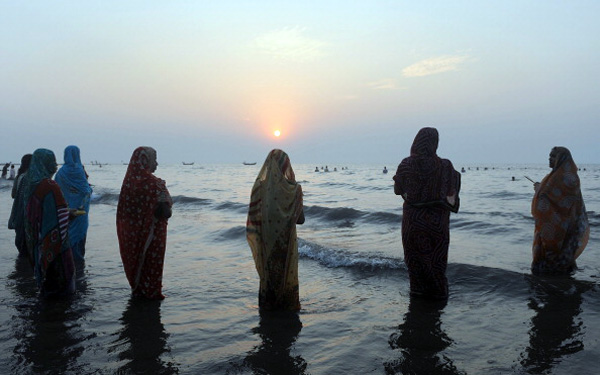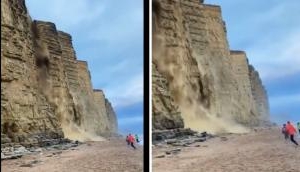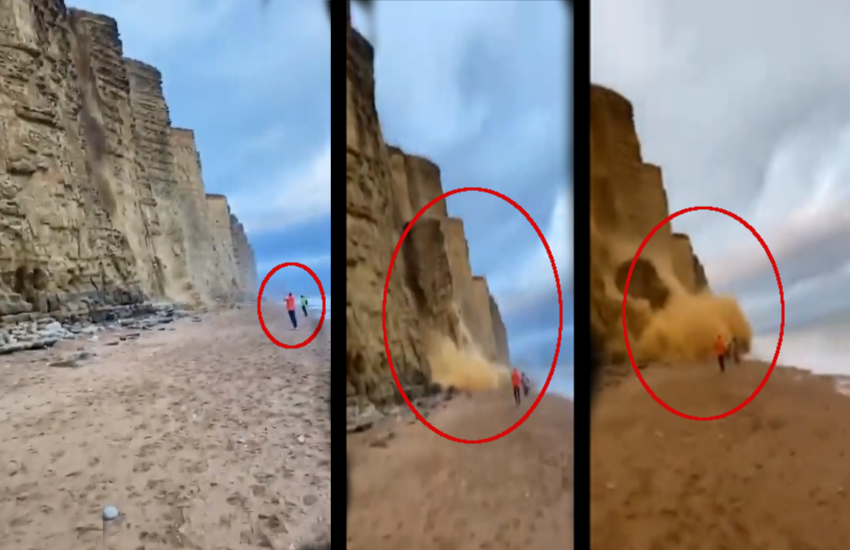Four extensions later, India coastal management plan still in tatters

The Modi government's 'maximum governance' has come to a screeching halt on India's 7,517-kilometre coastline.
On 31 January, India's coastal zone management plan - the key to what can, and cannot, be allowed along the shore - expired. The government has still not renewed it.
In the absence of a plan, coastal regulatory bodies have been unable to approve or reject clearances to any development up to 500 metres from the shore, an area that is known as the "coastal zone" and governed by special regulations.
Also read - Indian coasts for sale: 80% projects cleared; only 8% even visited
The clearances could be for all kinds of activities - from house repairs to construction of roads and hotels.
But this isn't the only bad news. The plans have been expiring, and getting one-year extensions for almost five years now.
As of now, there are no signs of ending of this practice.
Repeat extensions
The Coastal Zone Management Plan (CZMP) is an account of what exists in the coastal zone, and what new development can be allowed to ensure it isn't harmful to the coastal ecology.
The legal basis for this is the Coastal Regulatory Zone Notification, 2011. It replaced the first such notification issued in 1991.
The 1991 Notification led to a CZMP that was finalised in 1996. In 2011, the new notification said that a fresh CZMP should be prepared.
This made sense primarily because coasts have undergone several changes since 1996 - both natural and man-made. What's more, policy priorities about what we want from the coast have also drastically changed (more pressure on coastal real estate, but greater need for protection).
To prepare a CZMP, states prepare a draft plan (taking help from experts and the public) for their share of the coastline. This is approved by the central government's environment ministry, which has the legal mandate to implement the CRZ Notification.
The 1996 Plan was allowed to be used till 31 January 2013. It then got extensions four timesBut what made sense in 2011 has become a crude joke today.
The fresh CZMP has never seen the light of day.
The 1996 Plan was initially allowed to be used till 31 January 2013 to give states the two years to prepare their drafts. But no state followed the deadline.
So the ministry extended the deadline to 31 January 2014.
And then to 31 January 2015.
It, of course, expired again. The central government did nothing until 31 March 2015, when it extended the deadline - for the fourth time now - to 31 January 2016.
Now that deadline has passed and we are back in a limbo.
More suspense

Photo: Punit Paranjpe/AFP/Getty Images
The direct impact of this is that coastal clearances have come to a halt, until the plan is renewed.
But even if it is renewed, there's every chance that this process of renewal will continue as the process of making a new plan has hit a roadblock.
The delay now is because there is no clarity on where exactly the shore is.
There are two main shorelines used for coastal regulation - the low tide line and the high tide line (LTL and HTL). The coastal regulation zone is 500 metres from the HTL.
There seems to be confusion over where exactly the HTL is. Different states have used different methods to find it, and as a result their shorelines are inconsistent with each other.
Also read - Coastal road on Arabian Sea: how Maha govt is pushing Mumbai towards disaster
So, the environment ministry has given the task of finalising the HTL to its Chennai-based institute, the National Centre for Sustainable Coastal Management (NCSCM). This likely happened around 2013-14, according to Meenakshi Kapoor, programme manager at Centre for Policy Research.
The NCSCM is yet to give its final report on the tidal lines.
But if this HTL is different from what the states have taken into account, it means that new areas would come under the coastal zone, or some would be out. As a result, states may have to start the lengthy process all over again.
This means that even though many states, like Tamil Nadu and Karnataka, have completed the lengthy process of finalising their draft plans, they may even need to repeat it.
India's shorelines are yet to be finalised - the task has been given to the NCSCM in Chennai"The lack of clarity about the HTL came as a late realisation to the government. The National Coastal Zone Management Authority had formed a committee under [then earth sciences secretary] Shailesh Nayak for uniformity in tidal demarcation. But there is no trace of the committee report after the term of the NCZMA itself ended," Kapoor said.
"All decision-making on coastal development has come to a standstill. Even small repair works have to wait. We're still implementing a 2011 Notification based on a 1996 plan, even as the ground reality has changed. Even tidal lines move over time."
A process that was delayed under the UPA government continues to face the same fate under the NDA government.
Edited by Aleesha Matharu
More in Catch - How the govt lets green sinners judge themselves
Disaster airport: Goa's new runway in Mopa will run the ecology over







![BJP's Kapil Mishra recreates Shankar Mahadevan’s ‘Breathless’ song to highlight Delhi pollution [WATCH] BJP's Kapil Mishra recreates Shankar Mahadevan’s ‘Breathless’ song to highlight Delhi pollution [WATCH]](https://images.catchnews.com/upload/2022/11/03/kapil-mishra_240884_300x172.png)

![Anupam Kher shares pictures of his toned body on 67th birthday [MUST SEE] Anupam Kher shares pictures of his toned body on 67th birthday [MUST SEE]](https://images.catchnews.com/upload/2022/03/07/Anupam_kher_231145_300x172.jpg)






